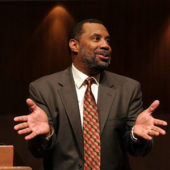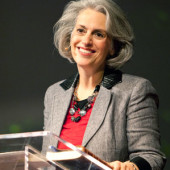When I first moved to New York City, I stashed granola bars and bottles of water in my bag to give to the homeless on my route to the office. I was quickly overwhelmed at the number of people in need—teenagers, women, and elderly babushkas whose English vocabulary seemed to contain only one word: help.
I soon began to run out of my daily supplies before I even made it to 32nd Street, where the woman who had first moved me to begin these efforts was sitting on the patch of pavement she had claimed for her own, her chin buried in her chest. It felt as if I was feeding the needy of New York alone.
Of course I was not alone, nor was my strategy sustainable for a twenty-something on a budget. Every morning, I served the same people a meager breakfast. The next day, they were still hungry. I was putting a Band-Aid on a wound that needed serious stitches.
Just as there are two ways to heal a wound, those seeking to fight poverty must tackle two goals: Short- and long-term care. The immediate needs can be patched with a “Band-Aid”: food, housing, clothing. But the long-term needs of the poor are just as pressing, and are what will break cycles of poverty in America: jobs, education, health care, and foster care.
While over 100 million Americans are enrolled in government-run welfare programs, only one institution has the potential to massively penetrate poverty and homelessness: the church. Think about it. The body of Christ could and should be the most creative, productive, generative force in a community. Besides public transit, where else does the businessman routinely coexist with the artist, engineer, and unemployed? The key to engaging the needy is to first engage the church.
How should we engage?
Assess your passion and skill set. It’s not sustainable to be active in every sphere of need, so take up a cause close to your heart. Choosing to help in an area that interests you will bring longevity to your ministry.
Research existing programs in your church and community. Starting a new outreach from scratch isn’t always the best allocation of resources. Organizations are typically hurting for more volunteers, and they might just be looking for the talent you can offer.
Form partnerships with people at church who are like minded, but not like you. Diverse skills and backgrounds are essential to solving problems creatively.
Don’t worry about gaining nonprofit status. If you do choose to start your own ministry or organization, get out and do the good work first! Applying for nonprofit status is costly, and an existing nonprofit will often agree to a fiscal sponsorship for tax purposes.
Band-Aids: Ideas for Addressing Immediate Needs
Food: Organize a non-perishable food drive at work, church, or school to collect donations for a local food pantry. Petition a restaurant or grocery store like Trader Joes to donate perishable items such as day-old bread and close-to-expiration meat, dairy, and produce. Ask friends to join you in serving at a soup kitchen once a month.
Housing: Volunteer to serve at a homeless shelter or battered women’s shelter. Participate in a Habitat for Humanity project with a group of co-workers or friends. Throw a baby shower for expectant moms in need at church or in a lower income neighborhood.
Clothing: Organize a clothes drive by collecting lightly used clothing at community group, church, or neighborhood, and donate to a thrift store. Or host a pop-up shop in a local area of need.
Stitches: Ideas for Addressing Long-term Needs
Jobs: Host a résumé-building workshop at a community center, and post flyers to promote the event. Provide a résumé template and a list of job-related questions to help volunteers build participants’ résumé. Ask that volunteers bring a laptop, and make sure you have at least one printer.
Education: Adopt a school. Volunteers can aid teachers or offer free after-school tutoring to students in extended-day programs. If your church is located within walking distance from a school, consider opening an after-school reading and tutoring program staffed by weekly volunteers.
Healthcare: Organize a health fair by reserving space in a community center, gym, or park, and post flyers to publicize the event. Provide screenings by registered nurses, teeth cleanings by hygienists, physical therapy consultations, haircuts, massages, and manicures. The goal is to promote healthy living while building relationships and giving the poor a sense of dignity. Rally clinics and businesses outside of the church to participate, too.
Foster care: Call your state’s Division of Child and Family Services, and ask how many additional families are needed to care for foster children in the county. The church alone might be able to bridge the gap. For example, David Platt, author of Radical, asked families from his congregation in Alabama to help care for the children in the county’s custody. 150 families were needed; over 160 families from the church signed up!
** This article is a part of In Touch magazine’s special report, the Missing Persons Project. Read more articles and watch videos at intouch.org/missingpersons. Reprinted courtesy of In Touch—the monthly magazine of In Touch Ministries. All rights reserved. Subscribe for free at intouch.org/magazine. **














